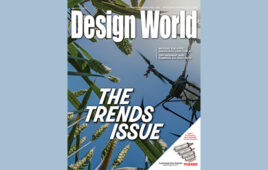IEEE conferences: Another reason not to believe everything you read
The Institute of Electrical and Electronics Engineers got some notoriety from its research activities when it retracted more than 7,300 abstracts, most from authors in China. It turned out that most of the retractions stemmed from numerous technical conferences in Asia that were fake, set up mainly to collect bounties paid by the Chinese government for published research.
The fake conference problem has since been cleared up, but the IEEE is once again taking flak because of its publication practices. This time questions have been raised by researchers from Tableau Research and the Sorbonne in France who authored a paper at an IEEE conference. After the conference, they noticed some factual errors in their paper. They asked the IEEE to republish the corrected paper or, barring that, add a notice about the corrections.
Surprisingly, the IEEE said no. After a period of several months, the authors received this reply: IEEE does not allow for corrections within the full-text publication document (e.g., PDF) within IEEE Xplore, and the IEEE Xplore metadata must match the PDF exactly. Unfortunately, we are unable to change the information on your paper at this time.
One of the paper’s authors, Dr. Steve Haroz, didn’t think much of the reply. On a blog covering visualization research, he wrote, “This response is absurd. For any publisher of scientific research, there is always some mechanism for corrigenda (making author corrections). But IEEE has a policy against it.” Haroz says he also emailed IEEE to point out that its response seems to contradict the organization’s own code of ethics, which states that IEEE members agree to acknowledge and correct errors.
Haroz says he cc’d the IEEE ethics board and got no response. But he eventually heard from someone involved in “Board Governance & Intellectual Property Operations.” They again refused to issue a correction but added that, any conference author who identifies an error in their work is free to build upon and correct a previously published work by submitting to a subsequent conference or journal.
Namely, the IEEE wanted Haroz and his collaborator to submit an updated version of the paper to another conference or journal. Haroz points out that this approach is unworkable for multiple reasons. The most serious problem is that leaving the original paper floating around potentially spreads misinformation. Plus, a new version would likely be rejected for being too similar to the old one. “According to IEEE’s policies,” Haroz points out, “if you update a paper and submit a new version, it must include ‘substantial additional technical material’….But some authors have added entire additional experiments to their papers and gotten negative reviews about the lack of major improvements over previous publications. In other words, minor updates would get rejected.….It could even be rejected for self-plagiarism unless we specifically cite the original paper somehow.”
Haroz also looked into retracting the paper, but “IEEE doesn’t seem very interested in retracting papers that make demonstrably incorrect statements or that incorrectly convey the authors’ intent,” he writes.
So Haroz and his coauthor remain stuck between a rock and a hard place. Fortunately, the errors they spotted didn’t affect the major conclusions of their paper, which concerned data visualization.
But suppose their paper had instead covered some aspect of Covid 19. You would then have a situation where a scientific publisher was unwilling to correct Covid 19 research findings.
That would be my nomination for the worst-ever example of fake news.
Leland Teschler • Executive Editor
[email protected]
Filed Under: DIGITAL ISSUES • DESIGN WORLD




